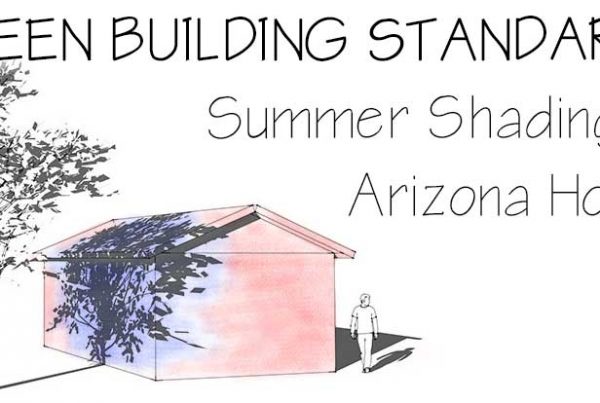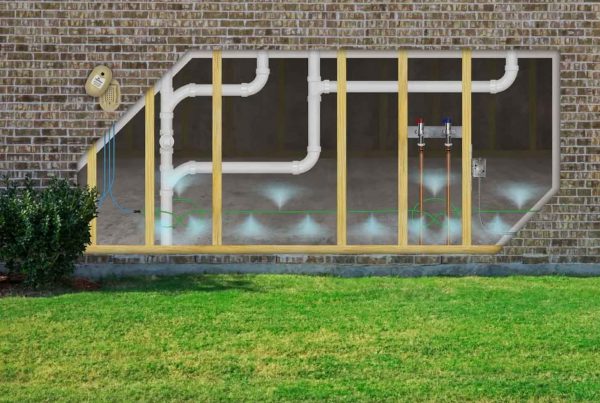
So, you’re thinking about buying land in Arizona to build your dream home? That’s an exciting step—but before you dive in, it’s important to understand that vacant land comes with unique challenges. From zoning regulations to wash setbacks and utility access, there are several factors that can impact your design, timeline, and overall budget.
Here’s what you’ll want to consider:
-
Zoning and land use restrictions
-
Required setbacks
-
Washes and drainage concerns
-
Floodplain risk
-
Soil conditions
-
Utility access
-
Hillside development rules
Whether you’re already in escrow or just beginning your search, this guide will help you identify key issues to consider. And while you can do a lot of research on your own—or talk to a real estate agent—the best advice will often come from a local home builder. At Vista Montana Builders, we specialize in custom home construction, and we regularly help clients perform lot feasibility studies during the early stages of planning.
Let’s walk through the major things to look out for when buying land in Arizona to build a home.
Zoning: Understand the Rules Before You Buy Land
Zoning determines what you can and can’t do with a property. It’s established by local municipalities and typically dictates:
- Minimum lot sizes
- Building height limits
- Setbacks (the distance from property lines you must leave unbuilt)
- Percentage of the lot that can be developed (also called lot coverage)
- Permitted uses (single-family residential, multifamily, agricultural, etc.)
Zoning is often overlooked but critically important. Just because a piece of land is advertised as “residential” doesn’t mean you can build what you want. For example, some zones have restrictions on accessory dwellings or prohibit short-term rentals. Others may require specific building styles or materials to preserve neighborhood character.
Your local planning and zoning department can provide zoning maps and explain what’s allowed. At Vista Montana Builders, we include this in our feasibility review so you’re not caught off guard later.
Setbacks: How Much Space Can You Actually Build On?
Every lot comes with required setbacks—also known as Building Setback Lines (B.S.L.). These create buffer zones around the property lines to ensure space between structures, provide room for utilities, and preserve sightlines.
Depending on the city and zoning, you might have:
- Front yard setbacks of 20–30 feet
- Side yard setbacks of 5–10 feet
- Rear yard setbacks of 15–25 feet
These distances reduce the actual buildable footprint of your land. On a narrow lot, side setbacks can significantly limit your home width. Always review the setback requirements for the zoning district before buying.
Washes: Beautiful, But Potentially Problematic
Washes—natural drainage paths formed by water erosion—are common in Arizona’s desert landscape. While they might only carry water during heavy rains, they can be dangerous during monsoon season and affect both safety and design.
Things to know:
- Washes often have additional setbacks beyond standard zoning.
- Building too close can require expensive engineering solutions like scour walls or deeper foundations.
- Historical flow data (measured in cubic feet per second, or CFS) helps assess risk.
- In rural areas, washes may be poorly documented, so a site-specific study may be needed.
Some buyers see a wash and assume it’s just a dry ditch—but it could impact your usable area or require mitigation.
Floodplains: Hidden Costs and Restrictions
Floodplains are areas at risk of flooding based on FEMA maps. Even if flooding is rare, it introduces additional design and cost considerations:
- Finished floor elevations must be built higher, which may require importing fill.
- Flood insurance is often required—and can be expensive.
- If even a small portion of your lot is in a floodplain, the entire property may be affected.
Areas like Desert Hills, North Phoenix, and Cave Creek can have surprising flood risks due to Arizona’s fast runoff and limited soil absorption.
Soil Conditions: What Lies Beneath
Before pouring a foundation, it’s essential to understand what kind of soil you’re building on. A geotechnical engineer will conduct a soil test and provide a report detailing composition, bearing capacity, and recommendations.
Here are some common soil types in Arizona:
- Expansive Soils: These swell and shrink with moisture, causing shifting foundations. Mitigation includes deeper footings and proper drainage.
- Rock or Caliche: Hard layers may appear 2–4 feet down, requiring jackhammering or excavation with heavy machinery—often increasing costs.
- Clay Soils: Clay can retain water and lead to poor drainage, requiring additional grading or special foundation design.
Soil affects everything from structural design to septic system performance. We always recommend testing before finalizing your plans.
Utilities: What Services Are (or Aren’t) Available?
Utilities are often the most expensive and overlooked aspect of building on raw land. Here’s a breakdown:
1. Sewer vs. Septic
-
-
- If a public sewer line is nearby (usually within 300 feet), you may be required to connect.
- If not, you’ll need a septic system, which requires soil testing and permitting.
- Rocky or clay soils can complicate septic design and increase costs.
-
2. Water Supply
-
-
- If there’s no municipal water line at the lot, you may need to drill a well.
- Connection to city water often comes with hefty development or tap fees.
-
3. Electricity
-
-
- If there’s no nearby transformer, you may have to pay for one to be installed.
- Power company engineering reviews and approvals can take 6–8 months.
-
4. Internet & Cable
-
-
- Rural areas may lack cable infrastructure. Satellite internet and TV are common alternatives.
- Bringing high-speed internet to a rural property may require costly trenching.
-
Keep in mind, bringing utilities to raw land often requires engineering reviews, municipal approval, and permits—many of which can take weeks or even months to process. Planning ahead can prevent costly delays once construction starts.
Hillsides: Building with a View Comes with Rules
At Vista Montana Builders, we see hillside lots as an opportunity to create homes that feel like part of the landscape—elevated, elegant, and intentionally designed to maximize views while minimizing impact. With that said, they come with additional development restrictions.
For example, in Cave Creek Arizona, any lot with a slope over 15% is considered hillside and subject to:
- Maximum disturbance limits (you can only alter a portion of the lot)
- Restrictions on retaining walls, driveways, and grading
- Additional design reviews to minimize visual and environmental impact
Hillside construction may also require:
- Special foundation systems
- More extensive drainage planning
- Higher building costs due to access challenges
We’ve built many hillside homes and can help navigate these unique regulations.
💡 Pro Tip: Budget an additional 15–25% above the land purchase price for preparation, engineering, utility installation, and permitting fees.
Get Expert Help Early On
If you’re serious about buying land in Arizona to build a home, the earlier you bring in a builder, the better. At Vista Montana Builders, our pre-construction services include lot feasibility reviews that examine all of the above factors so you can make an informed purchase.
Here’s what we’ll help you determine:
- Is the land buildable?
- What engineering or design challenges may arise?
- What will utility installation cost?
- How will soil and topography affect construction?
Avoid surprises after closing—contact us during your land search to schedule a feasibility study.
Let’s Build Your Dream on Solid Ground
Buying land to build a home is a major investment. Don’t go in blind. Reach out to Vista Montana Builders and let us help you understand the real potential—and challenges—of your property. We’re here to make your dream home a reality.
📬 Stay in the Loop
Want more useful insights like this?
Subscribe to the blog so you receive articles that are relevant to your home project.
Follow us on social media to stay updated with our latest tips and posts:
📘 Facebook @VistaMontanaBuilders
📸 Instagram @VistaMontanaBuilders








